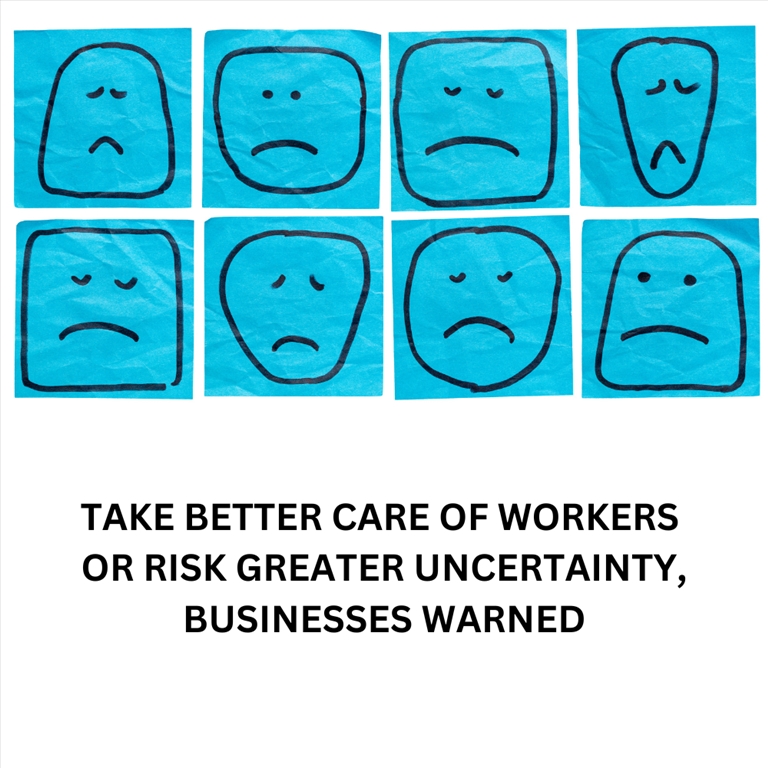
In an IOSH news article Dr Karen Michell talks about wellbeing washing.
In a workers’ job market, employers know they have to take greater care of their people. Some want to do right by them anyway but a growing number are falling into the trap of ‘wellbeing washing’, observes IOSH Research Programme Lead, Dr Karen Michell.
Wherever you are in the world, mental health is a growing issue in society and in the workplace. Consider, also, that five of the G7 countries have seen the number of workers and job seekers fall since the start of the Covid-19 pandemic. So there’s a pressing need for employers to look after their workers – an increasingly valuable resource.
Of course, attracting new recruits is also made more difficult as companies, businesses and organisations feel greater pressure to position themselves as ‘good employers’ offering attractive spaces in which to work.
Yet these greater worker expectations of employers are leading some of them into the practice of ‘wellbeing washing’, where employers talk a good game when it comes to worker care and wellbeing but fail to go beyond offering superficially good-looking benefits that don’t actually address the fundamental elements of what makes their workers feel content.
There’s often a disconnect between what’s offered by employers and what their workers actually need. Workers will see their bosses as being “all talk and no action” or, in some cases, inappropriate or unhelpful action.
Some organisations have a genuine desire to improve employee wellbeing but they want a quick fix. Others, with ‘wellbeing’ currently well on-message, have a firm eye on boosting their brand reputation. Whether well-intended or cynical, on its own, that move to introduce a state-of-the-art coffee machine and multi-coloured bean bags to the rest area and re-badge it the ‘Chill Zone’ simply won’t cut it.
Another prompt for an organisation to look to its position on worker wellbeing can be an occupational safety and health audit. One of the criteria to be assessed is whether or not there’s a wellbeing policy in place. In an effort to meet audit requirements a hastily drawn up policy document is developed to get things through. Yet the initiative lacks the drive and motivation necessary for its implementation. This situation is then consolidated when the auditor ticks the box after the policy is presented at the audit. Seldom is the question asked, ‘how well does it work and how do you know this?’
I also see problems where an organisation engages with a service provider to deliver a wellbeing programme. Without first establishing the needs of the organisation, the service provided then offers the employer a standard, one-size-fits-all approach to wellbeing management. The employer lacks the insight and understanding to know what should and could be included in the programme and is dazzled by all the bells and whistles offered in the presentation.
I have also seen how an organisation with a number of different facilities in varied geographical locations purchased a standard suite of offerings to meet its entire workforce. Workers in the manufacturing plants will have very different needs to those working at head office, yet they are all offered the same ‘solutions’.
So, here’s my 7-point plan for any company, business or workplace looking to get its worker wellbeing programme right:
1. How can you help?
Start by asking your workers what they need. These needs could relate to:
2. Offer bespoke help
A one-size-fits-all approach won’t work. Be prepared to provide different kinds of help for different people within the organisation. This could relate to:
3. Be realistic
Don’t offer what you can’t continue. Small businesses might focus on offering one thing that helps the majority and/or can be easily implemented.
4. Lead from the top
Start with getting manager buy-in, then develop a clear, simple policy statement that will win support from workers. Make the necessary resources available, well-known and accessible.
5. Get the right people in place
Be sure to have people running the wellbeing programme with the right skills and level of understanding. Consider using a specialist, such as an occupational health professional.
6. Be sure to measure success
Decide how success will be measured – maybe use pre and post campaign surveys to see what works and what doesn’t. Look for good indicators – for example, reductions in stress levels might be measured by lower blood pressure or increased physical activity.
7. Take the long view
Give your programme time to mature and grow. As the first phase takes root, build on this by introducing something new.
Good luck! Helping to keep your people contented while also attracting new talent will be vital to your operation – in fact, your whole future will depend on it.
Dr Karen Michell
IOSH Research Programme Lead (Occupational Health)